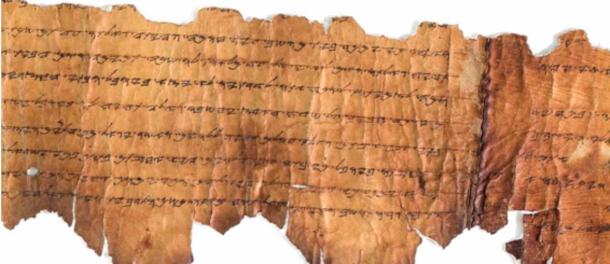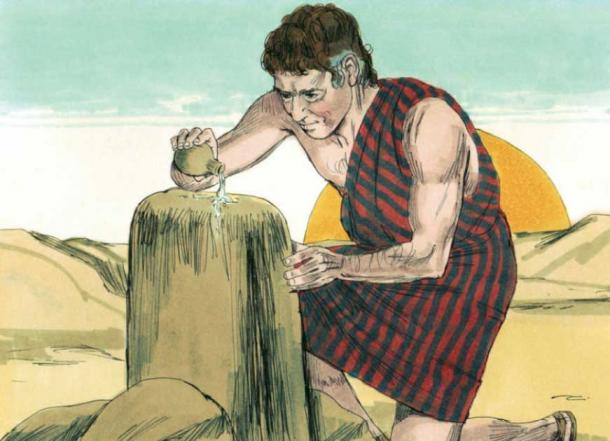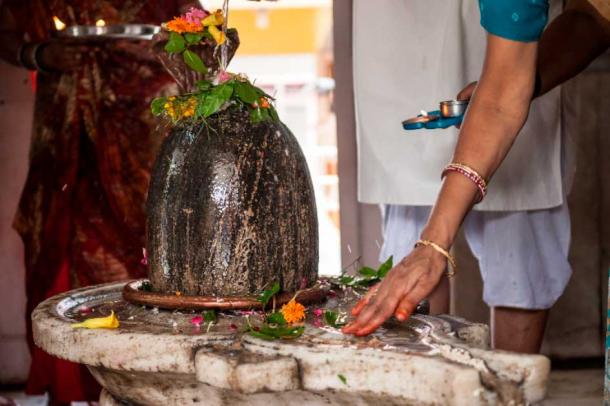The Christian Bible has been the subject of scholarly study for centuries. With a mix of prose and poetry, history and metaphor, deciphering biblical verses can be an arduous endeavor. The story of Jacob in Genesis is one example where careful reading can be revealing.
Translations Yield Clues about Jacob’s Pillow
In the King James Bible , the standard translation for Genesis 28:18 is as follows:
And Jacob rose up early in the morning and took the stone that he had put for his pillows, and set it up for a pillar and poured oil upon the top of it. And he called the name of that place Bethel that is, the house of God. Gen 28:18
What does the Book of Genesis mean by Jacob using a stone pillow? The verse as given seems intentionally opaque. But frequently, cryptic verses contain the most interesting information.
Using a stone as a pillow sounds rather uncomfortable. It would seem likely that there has been a mistranslation here, but what did the verse originally state? The word being used for pillow is merashah מראשה, meaning ‘pillow’. However, many words have dual meanings, and this word can also be translated as ‘high place’ or ‘hill’.
To continue deciphering the verse, the word used for pillar is matstsebah מצבח, which is the equivalent of the Arabic and English mastaba, meaning ‘pyramid’ (or perhaps a very small pyramid, a pyramidion). The sacred pyramidion that we know of from the history of the Israelites is the small conical omphalos-elagabal stone, which was intermittently owned by the Israelite-Jews, and was also located at Edessa for a while. Additionally, the “bethel” mentioned here could be intended as ‘a temple’, or a House of God. Finally, the word shum שום for ‘put’ and ’set up’ can also mean ‘made’ or ‘placed’.

Close-up of paleo-Hebrew Leviticus scroll. It’s crucial to interpret each word correctly (Shai Halevi on behalf of the Israel Antiquities Authority / CC BY SA 4.0 )
Now that all the constituent meanings for the words in this verse can be reviewed, what did it originally say? It is highly likely that it should be read as:
And Jacob rose up early in the morning and took the stone that he had made for his altar, and placed upon it an omphalos stone and poured oil upon the top of it. And he proclaimed the monument at that place a Temple or House of God. Gen 28:18
Perhaps now this confusing verse is beginning to make sense. It is possible, even likely, that the Latin and English translators did not want Christians to know that Jacob had placed a sacred omphalos stone upon a stone altar and was basting it with oils each morning and worshipping it.

Illustration of Jacob pouring oil on a stone (Distant Shores Media / Sweet Publishing / CC BY SA 3.0 )
However, this is exactly what people do with sacred omphalos stones, just as the veneration of the very similar lingams in India amply demonstrates. Early in the morning, they baste these stones with oils and venerate them. The ceremony even has a name – it is the Usha Kala Pooja . You can read more about the ritual sunrise worship of the lingam by Hindus today, similar to the way Jacob did in Genesis 28:18.

A shiva lingam shrine in Rishikesh. The daily worship of the stone with oil parallels the story of Jacob in Genesis ( NilaNewsom / Adobe Stock)
However, biblical priests and scribes had a problem with this similarity. The Jewish and Christian priesthood did not want their followers to know that the Israelite-Jews had similar beliefs and practices to the Hindus, so this verse had to be deliberately mistranslated. Judaism could not be tainted with overt links to the ‘heathen’ Hindus.
Other Christian-Hindu Links
In reality, there are many such links. For instance, the Malankhara Church in India maintains that their Church was established by Judas Thomas Didymas in the 1st century, and that Judas (the twin brother of Jesus) came from Edessa. The origins of the Malankhara Church will be explored in depth at another time.
However, perhaps you can imagine the huge problem this gives us. In order to fully understand the Old and New Testaments, this deductive process needs to be performed on nearly every verse in the Bible, in order to make sense of its otherwise garbled and confusing texts. My books have begun that process, but there is a long way to go.
Top Image: Jacob’s ‘pillow’ upon its stone altar, cleaned with oils each morning. In reality, this is the large Hampi-Shiva lingam (omphalos), and the omphalos itself is over a meter (3.2 feet) high. Temple lingams are generally large, while personal lingams can be very small. Source: Alexeiy / Adobe Stock
By Ralph Ellis
 RSS Feed
RSS Feed















 September 17th, 2022
September 17th, 2022  Awake Goy
Awake Goy  Posted in
Posted in  Tags:
Tags: 













